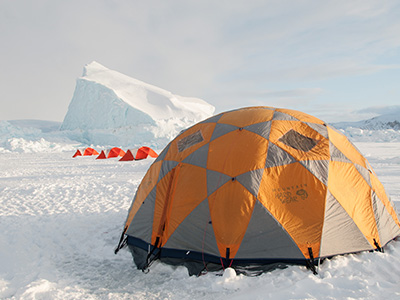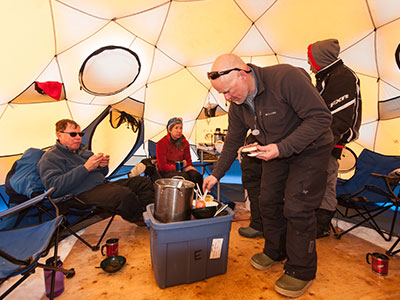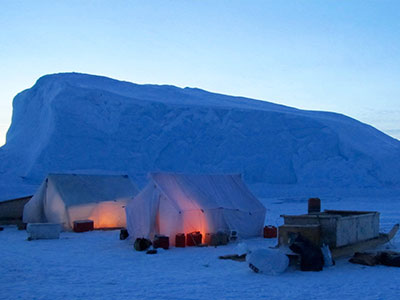Welcome To The Special Solace Found Only At The Top Of The World!
When Inuit families go camping — for fishing, hunting or berry picking reasons — it is something quite special and deeply cultural that they have always done.
The solid ground of Nunavut resists pegging, so tent ropes must be tied to rocks instead. In prime camping locations, found all across the territory, Inuit ancestors have left behind circles of tent stones for centuries of seasonal reuse. The traditional Inuit technique of constructing tents from animal skins for summer, like their ingenious building of igloos in winter, is a living art. However, most Inuit families today prefer to use a large, durable tent made of canvas that is easily transported by snowmobile, boat, ATV, airplane or dogsled. Whether supported by poles or freestanding, any tent pitched in Nunavut must be secured with guy ropes to resist the powerful arctic winds.
There are few designated camping areas in Nunavut. Some communities have special designated campgrounds with outhouses, tent platforms, fire pits and windbreaks, but most do not. However, most communities do have a spot where they prefer campers to pitch their tents. This preference is usually based on protecting the hamlet’s water supply, so inquire at the hamlet office before setting up in any community. The national parks in Nunavut all have specially designated camping sites which campers are advised to use.
The Inuktitut word for a modern tent is ‘tupiq’ and ‘ittaq’ is the word for a traditional skin tent.
Generally, campers are free to pitch their tent almost anywhere on the open tundra.
It’s important to remember that the land you are camping on is part of the traditional territory of local Inuit families. Though you are welcome to use it, always treat it with respect!



